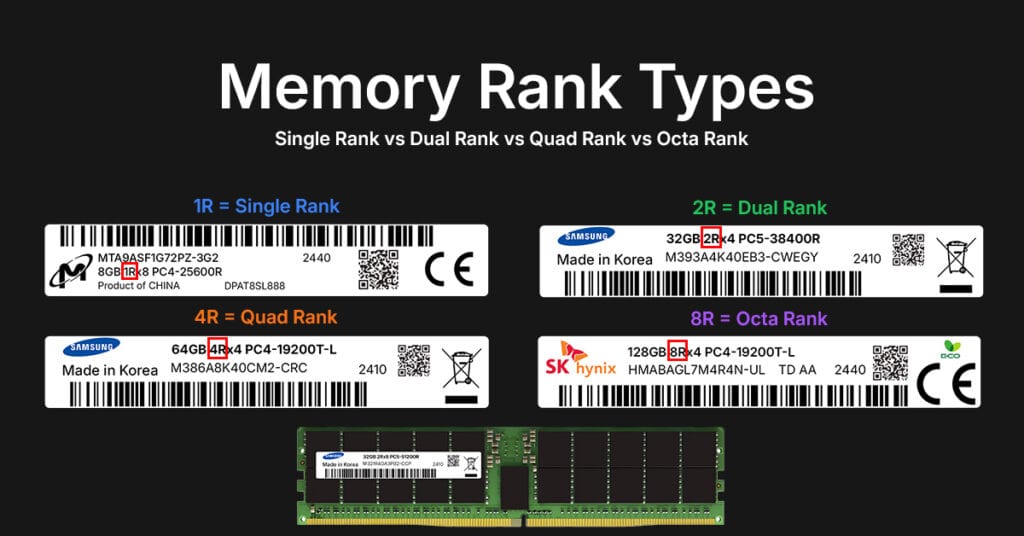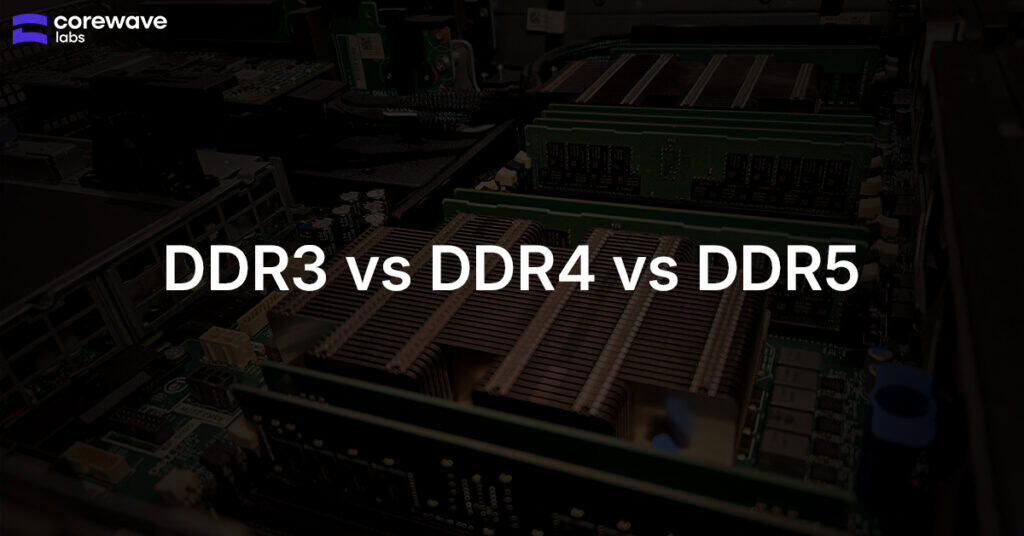Updated on:
| Written by:
What is LRDIMM Memory?
LRDIMM (Load-Reduced Dual Inline Memory Module)
LRDIMMs are high-capacity server memory modules that use an onboard buffer (iMB) to isolate and re-drive data, command, and address signals — dramatically reducing the electrical load on the memory controller.
This design supports up to 8 memory ranks per module, far exceeding the rank limits of older RDIMM or UDIMM designs (especially DDR3/DDR4), making LRDIMMs essential for virtualization, in-memory databases, and high-performance computing where maximum memory density is critical.
However, with the arrival of DDR5, modern RDIMMs equipped with 3DS (3D-stacked) DRAM can now also achieve 8 ranks and 256 GB per module, narrowing the historical gap between RDIMM and LRDIMM in some use cases.
For a detailed side-by-side, see our LRDIMM vs RDIMM vs UDIMM comparison that explains when to choose each type.
LRDIMM Key Differences from RDIMM and UDIMM Memory
| Module Type | Buffering | Capacity | Latency |
|---|---|---|---|
| UDIMM | None | Low (2–4 ranks) | Lowest |
| RDIMM | Command/address only | Moderate to high (up to 8 ranks on DDR5, e.g., 256 GB) | Moderate |
| LRDIMM | Full (data + command/address) | Highest (up to 8 ranks, maximized electrical load reduction) | Highest |
In short, LRDIMMs fully isolate all electrical paths — unlike UDIMMs (no buffering) and RDIMMs (partial buffering) — unlocking maximum memory density and stability, especially in ultra-dense server configurations.
Typical Applications
LRDIMMs shine in environments where memory capacity is the critical bottleneck:
- High-density virtualized servers (e.g., VMware, Hyper-V).
- In-memory databases (e.g., SAP HANA, Redis).
- HPC and advanced analytics workloads, including AI/ML training.
Trade-offs
Engineers must account for key trade-offs when choosing LRDIMM vs. RDIMM:
- Latency → LRDIMMs introduce ~45–53% higher latency compared to RDIMMs because every signal (data, command, address) passes through the onboard buffer.
- Power → Under full load, LRDIMMs consume up to 3.7× more power than UDIMMs; even at idle, they can draw up to 18.5× more, largely due to the always-active buffer.
- Cost → LRDIMMs carry a premium price tag, especially for modules ≥64GB, reflecting the complexity of their high-density buffered design.
Summary
LRDIMMs are the go-to choice when maximum per-server memory capacity and signal integrity are the priority. But with DDR5, RDIMMs can now reach impressive 8-rank, 256 GB capacities — closing the historical gap in some deployments. For architects scaling large virtualized or in-memory systems, understanding when to deploy LRDIMM vs. RDIMM (or even high-capacity DDR5 UDIMMs) is critical to balancing performance, power, and cost.
LRDIMM Memory FAQ
What is LRDIMM memory?
LRDIMM (Load-Reduced DIMM) is a server-grade memory module with onboard buffers to reduce electrical load, allowing servers to install more memory ranks per slot compared to RDIMM or UDIMM.
What is the LRDIMM specification?
LRDIMM supports JEDEC standards for DDR3, DDR4, and DDR5, handling both data and control signals with an isolated memory buffer (iMB). DDR5 versions typically offer up to 8 ranks and capacities like 256 GB per module.
What is 3DS LRDIMM?
3DS LRDIMMs combine 3D-stacked DRAM (3DS) with full signal-buffered LRDIMM architecture to maximize module capacity and electrical isolation. However, they are rare in practice because DDR5 3DS RDIMMs already deliver very high capacities (up to 256 GB) at lower cost and complexity.
About the Author

Edgars Zukovskis
Board Member | CoreWave Labs
14+ years of expertise helping telecom operators, datacenters, and system integrators build efficient, cost-effective networks using compatible hardware solutions.
Recommended Reads
Discover insights to power your infrastructure.


